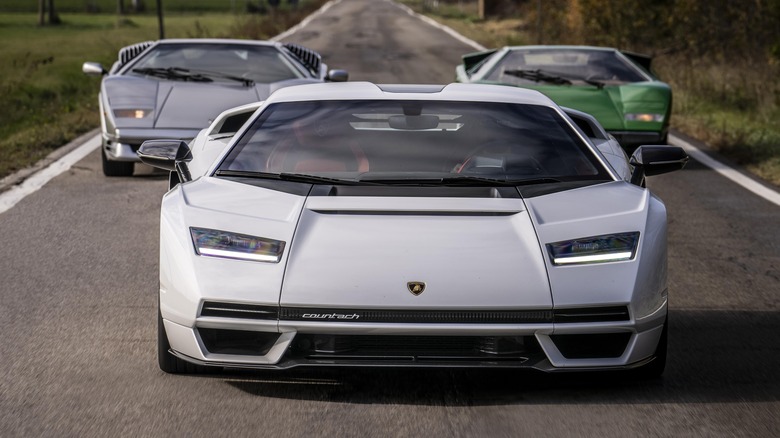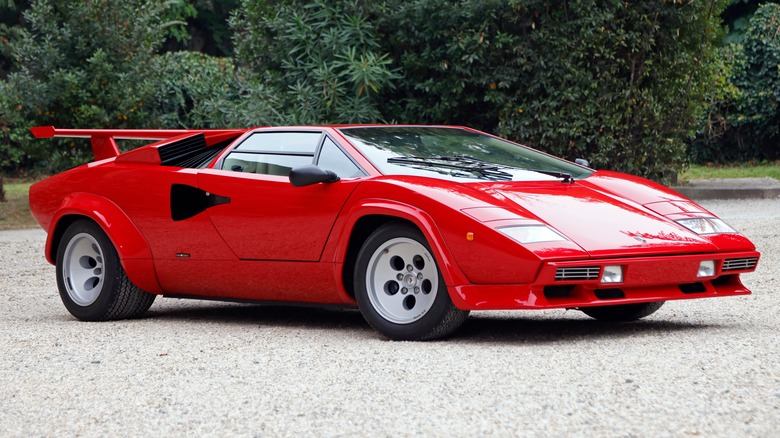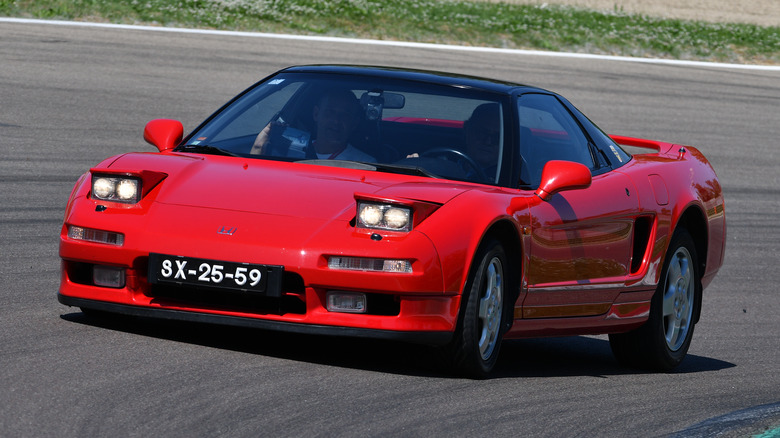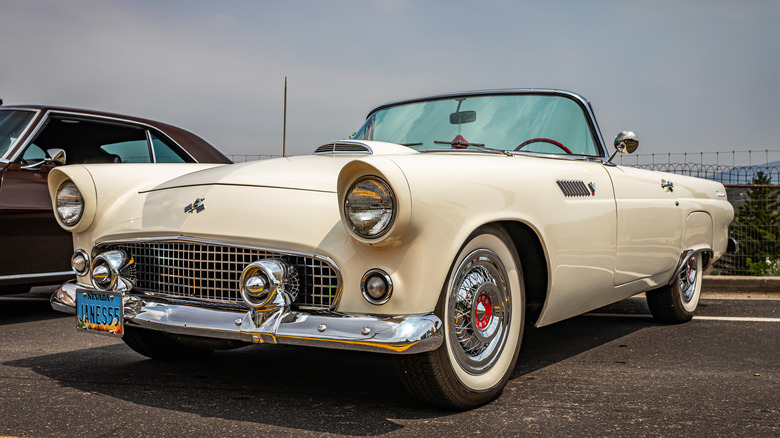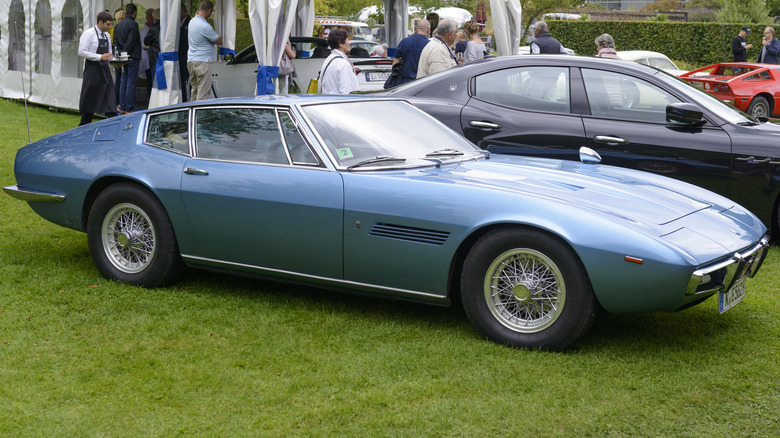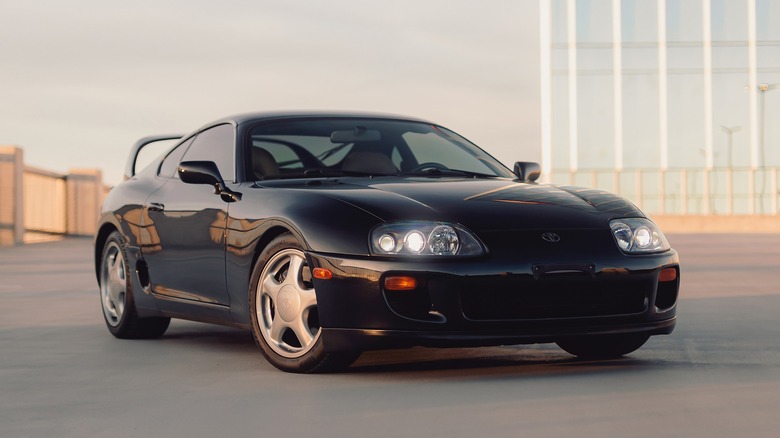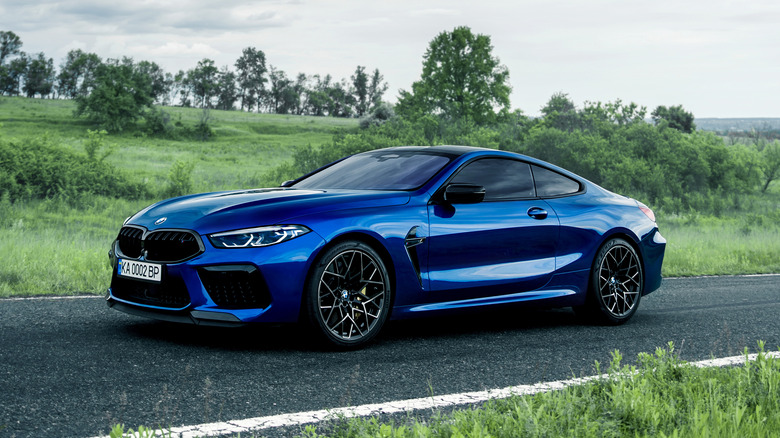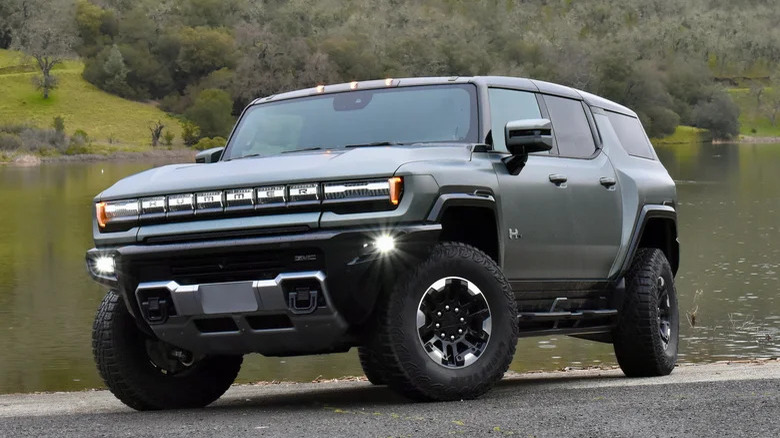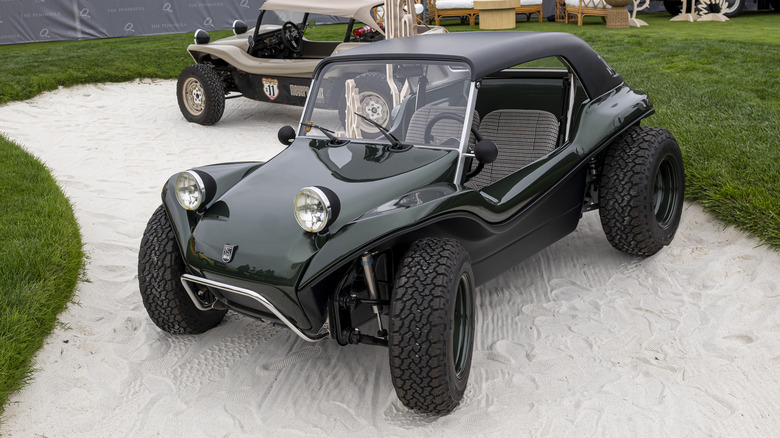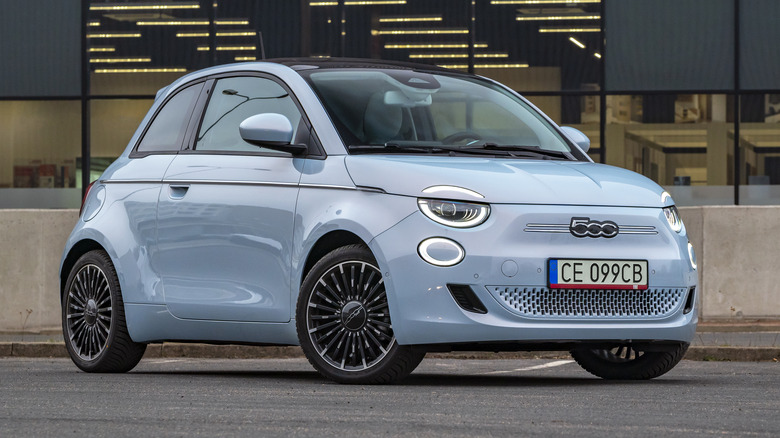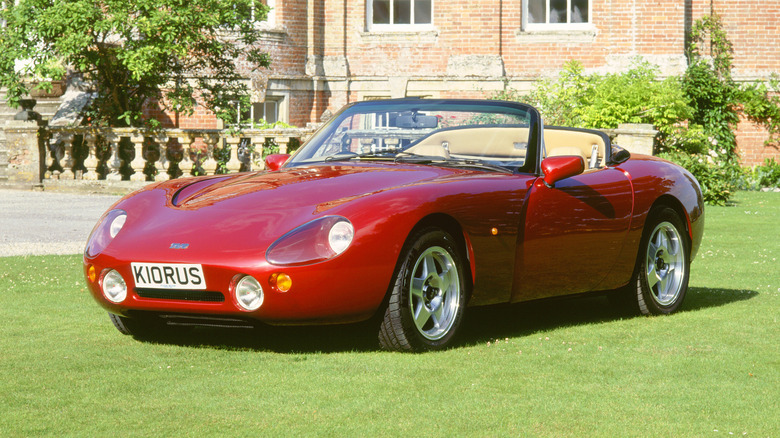5 Classic Cars That Are Even Better Than Their Remakes (And 5 That Aren't)
Resurrecting a classic car nameplate comes with plenty of challenges — not only does the new car have to live up to the reputation of its predecessor, but it has to be competitive with everything else on the contemporary market. There are plenty of famous classic cars that have seen recent resurrections, with brands eager to capitalize on nostalgia for their most iconic models. The market is currently awash with them, with the likes of the Land Rover Defender or Ford Bronco proving to be big hits with buyers even before the cars shipped.
For certain remakes, it's hard to argue that one generation is definitely better than another, but there are plenty where the distinction is a little more clear-cut. From Italian supercars to American beach buggies, half of these remakes took their nameplates to new heights, while the other half fell short of the high mark set by their predecessors.
Classic's better: Lamborghini Countach
The original Lamborghini Countach became one of the most iconic supercars of its era, with its distinctive wedge shape being instantly recognizable and its V12 engine ensuring enthusiasts will always hear one coming before they see it. It was designed to replace the Miura, itself a legendary supercar, and it was unveiled in 1971. It took until 1974 for the first examples to reach customers, but production continued for another 16 years, with various tweaks and upgrades made over the car's lifespan.
The Countach needs no introduction to anyone with even a rudimentary knowledge of supercars, and with such a legacy, any successor needed to be exceptional. That successor was unveiled in 2021 in the form of the Countach LPI 800-4, a limited-run model with an 803 horsepower hybrid V12 powertrain. It's an impressive car in its own right, drawing on the technology debuted in the Sian while taking design cues from the classic Countach, but that's arguably the reason the original remains the better car: the new Countach, ultimately, isn't revolutionary. The first-generation Countach was unlike anything Lamborghini had made before, with its out-there looks and unprecedented horsepower. The remake pays homage to the original, but can't claim to be much more than a tribute to one of Italy's greatest-ever supercars.
Classic's better: Acura NSX
Another revived supercar that had trouble living up to the standard set by its predecessor is the Acura NSX, the remake of which debuted in 2016. The original '90s car was a landmark model, with handling that surpassed almost anything else on the road at the time. It was so exceptional that the designer of the McLaren F1, Gordon Murray, even used the NSX as a benchmark during development. The arrival of the NSX also served as a wake-up call for European performance car makers like Ferrari, prompting a wave of new supercars designed specifically to fight the Japanese upstart.
Much like the Countach, the revived NSX faced the almost impossible task of living up to one of the most era-defining classics, although it put up a solid fight. In fact, SlashGear is of the opinion that the second-generation NSX naysayers are wrong about the car, and that its combination of performance and livability means that it will likely be appreciated more in retrospect. Nonetheless, the new NSX was always going to struggle to make the same impact the original did, even if, in its own right, it's a great car.
Classic's better: Ford Thunderbird
There's always a risk when remaking a car that the finished product can't live up to the hype it's generated, and that was the case with the most recent Ford Thunderbird. After seeing the success of the Chevrolet Corvette in 1953, Ford set about developing its own sporty V8 convertible, with the first generation Thunderbird unveiled in 1954. It was an instant hit, in no small part thanks to its temptingly affordable price, and soon eclipsed the Corvette in sales. Over the following decades, the Thunderbird remained in production, but after nine generations, the car was retired in 1997.
It wasn't gone for long. In 2002, a new version of the car was relaunched with styling that aimed to pay tribute to the golden age Thunderbirds. Although its looks arguably haven't aged well, at the time, it was highly regarded and won praise from both buyers and the press. That hype faded just as quickly as it had built, however, with sales tailing off as buyers realized the car was fairly unremarkable in every other aspect apart from its exterior, not to mention overpriced. By 2005, Ford could no longer justify keeping the car in production, unceremoniously axing it just a few years after the remake's triumphant debut.
Classic's better: Maserati Ghibli
Usually, when a classic nameplate is revived, the manufacturer will try to carry over the attributes that made the original so good to the new car. Maserati is not like the rest — the Ghibli has been resurrected not once but twice, and none of the three cars to carry the name bear much relation to each other. The original Ghibli debuted in 1966 as a sporty V8 grand tourer, with sleek bodywork designed by Giorgio Giugiaro. It was very fast for its day, with 335 horsepower on tap in its most potent form, and a top speed north of 170 mph.
The second Ghibli arrived in the '90s as a V6 coupe that shared much of its underpinnings with the widely-panned Biturbo, but it's the third Ghibli that stands out as a particularly odd evolution of the name. The most recent resurrection of the nameplate is a BMW-rivaling sedan which, in base spec form at launch, offered a 3.0L diesel that was neither the fastest nor most refined in its class. For 2023, the American market Ghibli offers a choice of either a 345 horsepower V6 or a 572 horsepower V8, but it still struggles to make a case for itself in the competitive sports sedan segment. It's being discontinued in 2024 – let's hope that if a new Ghibli is launched, it takes more cues from the original.
Classic's better: Toyota Supra
Perhaps one of the most infamous recent cases of a car struggling to live up to the reputation of its predecessor is the Toyota GR Supra, which like many of the remakes here, is an appealing car when considered individually. However, being the fifth-generation Supra, it had to live up to the precedent set by the fourth-generation car, which features one of the most famous tuner engines ever made.
Stoking the controversy surrounding the new Supra was the fact that it was co-developed with BMW, sharing many key components. The MkIV was an all-Japanese icon, with the 2JZ being the pinnacle of Toyota's over-engineering during the '90s. The GR Supra can't claim to make double its stock power output with a few simple mods, and its German roots are clearly visible even from inside the cabin, where much of the interior is carried over. While the fact that Toyota even made a new Supra should be celebrated, it was perhaps inevitable that the latest car would be seen as a letdown by some given the feverish hype around its predecessor.
Remake's better: BMW 8 Series
BMW has remained reluctant to make a full-fat supercar after the sales failure of the M1, but the 8 Series gets tantalizingly close in its most potent forms. In particular, the 2020 M8 Competition was so fast SlashGear's reviewer thought it felt wasted on public roads, especially given its firm ride and carbon-ceramic brakes seemed purpose-built for the race track. It wasn't always that way: the first-generation 8 Series was a more traditional grand tourer, but make no mistake, it still packed plenty of punch.
The V12 under the hood of the '90s 8 Series made up to 375 horsepower, making it ideal for mile-munching on the autobahn. But, with a well-appointed cabin and relatively heavy curb weight, it was by no means a track car. The revived 8 Series offers more of a choice — while lower trims still lean more toward the luxurious, road-oriented side, the M8 Competition feels like a supercar, and looks like one too. Both generations have their merits, but it's the latest 8 Series that offers more options, better handling, and a lot more power.
Remake's better: GMC Hummer
The original Hummer lineup debuted during a period of renewed interest in climate change and efficiency, but as some of the market's most gas-guzzling SUVs, they laughed in the face of the green movement. The brand proved popular at first, but was eventually killed off due to rising gas prices and GM's bankruptcy in 2009. The new, all-electric Hummer is still just as outlandish as before, but with its new choice of powertrain, it's ironically cleaner to run than most other vehicles on American roads.
It's also been given a fresh array of party tricks, including Crab Walk and Watts to Freedom mode. The latter of those two enables the huge EV to deploy maximum power output to hilarious effect, making it faster off the line than the giant SUV has any right to be. It's also just as off-road capable as the original, not that most owners will ever take it too far off the asphalt. Perhaps most importantly, though, the Hummer EV keeps the same sense of oversized silliness that made gas-powered Hummers so famous. Electric vehicles are often talked about in terms of their improved efficiency, planet-saving credentials, or everyday practicality, but the Hummer EV disregards all of those things. Yet, it's proved so popular that reservations are currently closed until GM can clear the backlog of orders. If that's what it takes to get certain buyers excited about electric vehicles, then so be it.
Remake's better: Meyers Manx
Bruce Meyers' Beetle-based kit buggy first became famous in the '60s, but financial trouble saw it run out of cash and enter dormancy by 1971. Meyers relaunched his business in 2000, selling it to new owners in 2020. In 2022, the Meyers Manx company unveiled a new model, an all-electric version of the classic buggy with a range of up to 300 miles. With 202 horsepower on tap, the Manx 2.0 can sprint from 0-60 mph in 4.5 seconds, which will likely feel even faster given that there are no doors and minimal protection between the driver and the road.
In terms of design, the company made minimal changes to Bruce Meyers' iconic kit, but unlike the original, all new cars now come assembled from the factory. The dawn of electric powertrains opened up the possibility of reinventing all sorts of classics for the modern era, and the Manx 2.0 is a great example of that still emerging market.
Remake's better: Fiat 500
Every country with its own automotive history has at least one "people's car" — for Italy, it was the Fiat 500. Designed to be as cheap as possible so that even low-paid workers could afford one, the 500 grew to become a popular car with both the young and the old, even if it was originally overshadowed by the 600. Production began in 1957 and lasted until 1975 when it was replaced by the Fiat 126.
In 2007, to celebrate the car's 50th anniversary, a new generation was unveiled. It went on sale in Europe the same year and proved very popular, although it never saw the same level of success on its eventual North American debut. It's since been axed in the U.S., but sales continue across Europe, with 500 variants ranging from the efficiency-focused 1.0L hybrid to the track-ready Abarth 695 hot hatch. The electric 500e is set to relaunch in America for 2024, as Fiat makes the transition to an all-electric lineup over the coming years.
Remake's better: TVR Griffith
Although TVR continues to insist that a new generation of the Griffith is still heading to production soon, despite years of delays, for the purposes of this article we're considering the 1990-2001 Griffith as the most recent production car to bear the nameplate. As far as resurrections go, it was an extremely successful one — at its unveiling at the Birmingham Motor Show, an order for the car was registered every eight minutes. The Griffith was a world away from the increasingly outdated wedge-shaped cars TVR had previously offered, with completely redesigned bodywork as well as an upgraded engine.
The original Griffith of the '60s was a British-American creation that followed the Shelby Cobra's formula: a large Ford V8 stuffed into a small British sports car. It was instrumental in building the TVR brand both at home and abroad, but it suffered some serious issues, including heat build-up from the engine and twitchiness at higher speeds. That made it a tricky, sometimes unpleasant car to drive. The revived Griffith followed the same "big V8 in a small sports car" formula, but was more approachable to drive, at least by TVR standards. It's arguably one of TVR's best-ever cars, so if the upcoming incarnation of the Griffith does eventually make it to customers, it'll have big shoes to fill.
